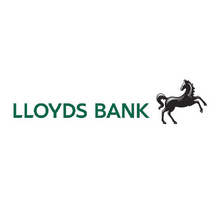One of the Seminars during MACH was an economic update given by Rhys Herbert, Senior Economist at Lloyds Bank Commercial Banking. You can download the slides below and, hopefully, these notes will help to add some flavour to those pictures.
The theme of the presentation is that we are still operating in uncertain times and while there are some positive indicators, there are still risks to the growth path. While uncertainty has reduced from peaks during the pandemic and in the aftermath of the invasion of Ukraine, their global uncertainty indicator remains around the post-Brexit levels rather than the lower levels that were typical before the referendum.
Inflation continues to fall with, for the UK, energy prices having a negative effect while food prices are broadly neutral. This is likely to lead to interest rates falling this year. This process can also be seen in the manufacturing sector where both output and input prices have fallen back from their post-pandemic peaks. However, recent events have seen oil prices increase and this creates a short-term risk to inflation which may lead to the MPC delaying the implementation of its first interest rate reduction until the Autumn.
The other major risk to the forecast comes from the labour market which remains tight, helping to sustain higher than expected wage increases, especially in the service sector.
Economic growth has been sluggish in most of the advanced economies, perhaps with the notable exception of the USA, and it seems unlikely that 2024 will bring much of an acceleration for the UK or Euro-zone economies. Having said that, there are some bright spots, with signs that the manufacturing sector could be set for a gradual improvement through this year and into 2025.
The PMI for the sector has just got back above 50 (although as noted elsewhere, this may only have been a blip caused by supply chain disruption) and pressure on consumers is set to ease despite the fact that the increase in interest rates has still to work through to mortgage rates because of the increased use of fixed rate deals. Their current forecast is for UK GDP growth of +0.5% this year and +1.0% in 2025 – while this is an improvement, it is still below the long-term trend for the economy.
At the time of the presentation, it was expected that there would be three cuts to interest rates in the UK this year, although the European Central Bank was likely to be the first to cut its lending rates. This should be a positive for investment which is of importance to the manufacturing sector, adding to the impetus from the improvement in output which looks to be spread across the sector. The downside here is the weakness of export orders but this may be helped by the relative weakness in Sterling.
The presentation concluded with a brief look at the issue of productivity which is still a long-term concern for the UK generally and the manufacturing sector in particular.
Please take particular note of the disclaimer on the final page of the slides – the document and these notes are only for information and must not be read as providing investment research and should not necessarily be considered as objective or unbiased.

